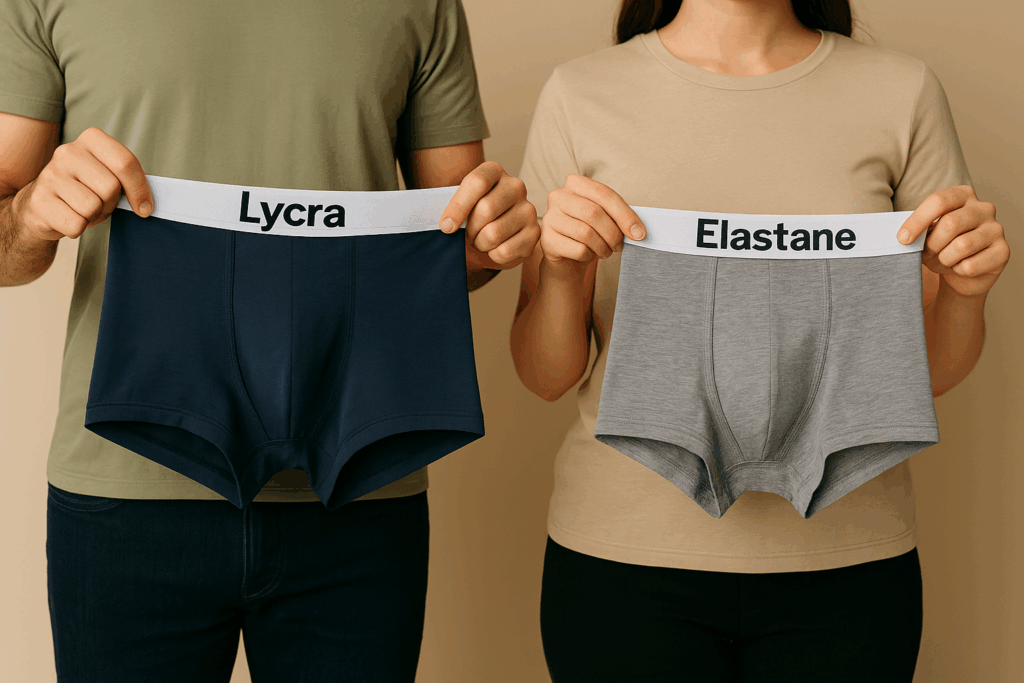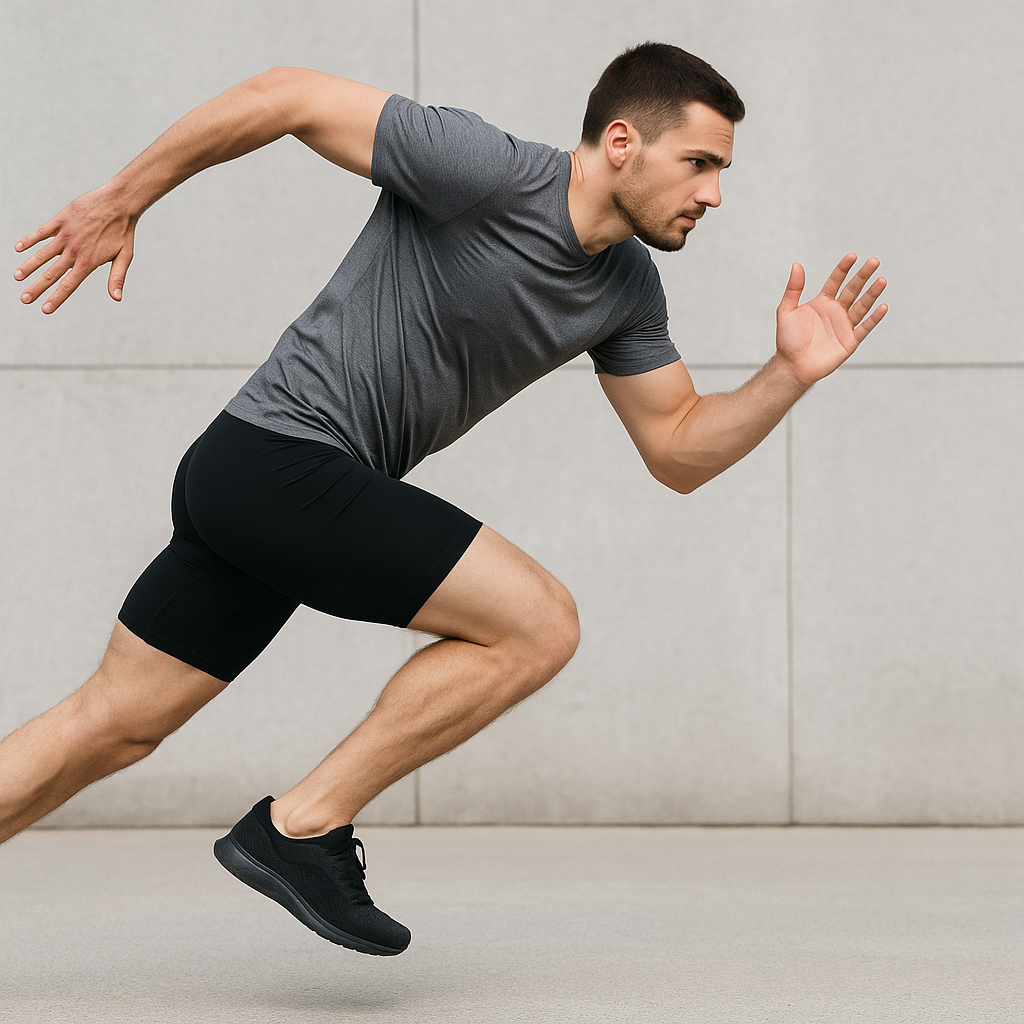Choosing the right underwear can make a huge difference in your comfort, confidence, and even your skin health. But when it comes to stretch fabrics, terms like Lycra and elastane often get tossed around, sometimes interchangeably, which can confuse things further. Today, we’re peeling back the layers to clearly explain what elastane and Lycra truly are, how they perform in underwear, and which might just be the better pick for you. Ready? Let’s dive in.

Understanding What Elastane Is and Why It’s Used in Underwear
Elastane, sometimes called spandex or by brand names, is a synthetic fiber known for its exceptional elasticity. It’s what gives your underwear that much-loved stretch and flexibility. Imagine underwear that moves with you rather than against you — that’s why elastane is a wardrobe game-changer.
What Elastane Is and Its Key Properties
Elastane is a polyurethane-polyurea copolymer fiber — a mouthful, I know! In simpler terms, it’s a stretchy fiber that can typically elongate to about 500% of its original length and snap back without sagging [1]. This ability to stretch and recover makes elastane ideal for form-fitting garments, particularly underwear.
Some core qualities of elastane include:
- High elasticity: Unparalleled stretch compared to other synthetic fibers.
- Durability: Resistant to abrasion and wear, which helps underwear maintain shape.
- Lightweight: Doesn’t add bulk but enhances fit.
These properties allow underwear to fit snugly without feeling restrictive or saggy over time.
How Elastane’s Stretch and Durability Benefit Underwear Comfort and Fit
Think about your favorite pair of underwear—the ones that feel like they were tailored just for you. Elastane is the secret behind that perfect fit. Because of its stretch, underwear can conform to all your movements — jumping, sitting, or even a quick jog — without bunching or losing shape.
Durability also plays a big role. Underwear undergoes constant wear and washing, and elastane’s resilience keeps it looking new longer. This helps avoid that sad, worn-out look or uncomfortable looseness that can occur with regular cotton alone [2].
In terms of comfort, elastane also promotes freedom of movement and reduces friction against skin—a crucial factor to prevent chafing. That’s why it’s a trusted component in not just casual underwear but also in sportswear and lingerie.
Alright, now that we understand elastane’s role, let’s clarify Lycra’s identity, because here’s where things often get tangled.
Clarifying Lycra’s Role as a Branded Elastane Fiber
Defining Lycra and Its Relationship to Elastane
Lycra is actually a brand name for a specific type of elastane fiber produced by Invista, one of the largest fiber manufacturers in the world [3]. It’s not a different material—it’s elastane—but the Lycra brand often signals a certain quality or performance level in the eyes of consumers.
You could think of elastane as the fiber family, with Lycra being a VIP member known for consistent high standards. Lycra fibers undergo precise manufacturing controls, promising better stretch recovery, softness, and durability compared to generic elastane variations.
Common Myths About Lycra Versus Elastane
Here’s where it gets a bit tricky: many people think Lycra and elastane are completely different fibers. Nope! Lycra is elastane, just branded. Another myth is that all elastane fabrics are created equal. Not true—Lycra is known to have tighter quality control, resulting in fabrics that last longer and feel softer [3].
Also, some believe Lycra is only found in high-end clothing, but it’s actually quite widespread, from your basic boxer briefs to premium performance underwear.
Why Lycra Is Recognized for Quality in Underwear Manufacturing
Manufacturers often prefer Lycra because it delivers reliable performance, including excellent stretch and shape retention thanks to proprietary fiber technology [4]. For instance, underwear labeled as having “Lycra” content ensures you’re getting a product tested for durability and comfort more rigorously than generic elastane blends.
This quality assurance is why Lycra underwear tends to resist sagging and bagging better over time, even after multiple washes. If you’re looking for underwear that keeps its fit and looks fresh for months, Lycra brands tend to be a solid bet.
Now that we’ve sorted out what Lycra and elastane are, it’s time to see how they compare side by side in real-world underwear performance.
How Lycra and Elastane Compare in Underwear Performance
Differences in Stretch, Fit, and Shape Retention Between Lycra and Generic Elastane
Both Lycra and generic elastane provide excellent stretch, but Lycra edges out in terms of stretch recovery—meaning it bounces back to its original shape more reliably after wear [3]. This matters because underwear that loses shape can become loose and uncomfortable.
For example, in plain knit fabrics with varying elastane percentages, Lycra blends maintained fabric weight and shape better through usage cycles compared to unnamed elastane fibers [5]. That translates to boxer briefs and briefs that contour the body better for longer.
Breathability and Moisture Control: Lycra Compared to Elastane
Breathability and moisture management are crucial for underwear comfort, especially if you’re active or have sensitive skin. Lycra fibers are engineered to balance stretch with moisture vapor permeability. Research shows that fabrics with Lycra enable better water vapor permeability, reducing sweat accumulation and skin irritation risks [6].
Generic elastane blends vary more here because their quality controls aren’t as stringent, which can affect breathability depending on the fabric construction and elastane ratio.
Which Material Offers Better Durability and Longevity in Underwear?
Durability is where Lycra truly shines. It resists mechanical stress and repeated washing better, helping underwear keep its form and appearance longer [4]. Fabrics using Lycra resist snagging and fiber degradation more effectively, which means fewer holes and less thinning.
Generic elastane underwear can be durable too, but the variance in fiber quality and manufacturing usually means it won’t last quite as long or maintain fit as well.
Alright, so how do you choose between them? Let’s unpack this next.
Choosing Between Lycra and Elastane Underwear Based on Your Needs
Best Material Choice for Activewear and Physical Activity
If you’re into sports or highly active, Lycra is the way to go. Its superior stretch recovery and moisture management make it ideal for activewear underwear, providing a second-skin feel without sagging or sweaty discomfort [3][6].
For example, athletes often prefer Lycra blends because they support movement while wicking moisture, reducing the chance of skin irritation during workouts.

Considerations for Sensitive Skin: Lycra or Elastane?
For those with sensitive skin, fabric softness and breathability are key. Lycra fabrics tend to be crafted with softer finishes and better moisture control, which can reduce irritation [6].
However, both Lycra and elastane are synthetic fibers that can cause issues for some extremely sensitive individuals. In these cases, cotton blends with a modest percentage of Lycra (around 5%) can offer a softer alternative with enough stretch [5].
Price, Availability, and How to Find High-Quality Lycra or Elastane Underwear
Lycra underwear often costs a bit more due to its branded quality and manufacturing controls, but the price difference is justified by longer lifespan and sustained comfort.
Generic elastane underwear is widely available and budget-friendly, a good choice if you’re looking for affordable basics or are less concerned with longevity.
When shopping, look for labels specifying Lycra content and consider brands that guarantee fabric quality through independent testing. This ensures you’re not just paying for a name but getting durable underwear [3][4].
Summary: Making the Right Choice Between Lycra and Elastane Underwear
Recap of Key Differences and Similarities
To wrap things up:
- Elastane is the fiber known for unbeatable stretch.
- Lycra is a high-quality branded type of elastane.
- Both improve comfort and fit, but Lycra usually offers better shape retention, durability, and moisture management [1][3][6].
Practical Advice for Selecting Underwear Based on Lifestyle and Budget
If daily comfort and fit are priorities and you’re moderately active, elastane underwear is perfectly fine. If you’re highly active, sensitive-skinned, or want longer-lasting underwear, Lycra is worth the investment.
Remember: look beyond the stretch percentage—fabric construction and brand reputation are crucial.
Final Tips on Material Quality and Underwear Construction
Check for:
- A balanced elastane or Lycra ratio (usually 5-15% is ideal)
- Breathable cotton or modal blends for softness and moisture absorption
- Reinforced seams and waistbands for durability
Good underwear supports your lifestyle without fuss. Whether Lycra or generic elastane, you deserve underwear that feels like it was made just for you.
